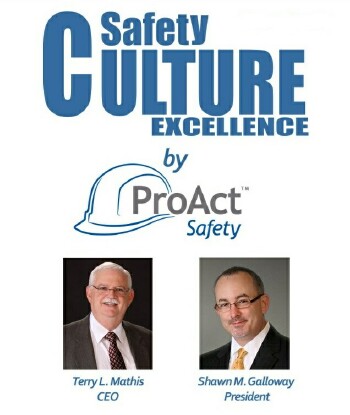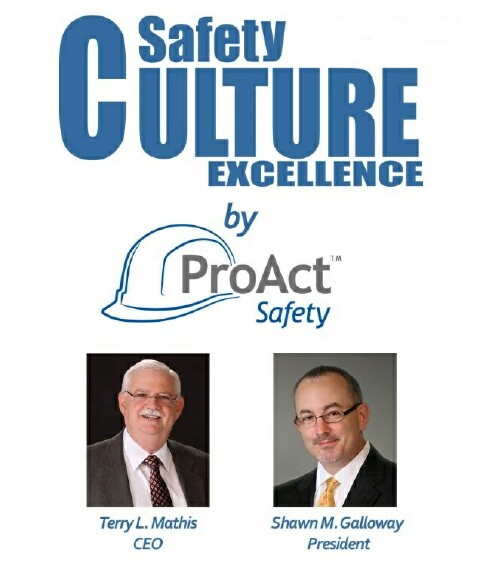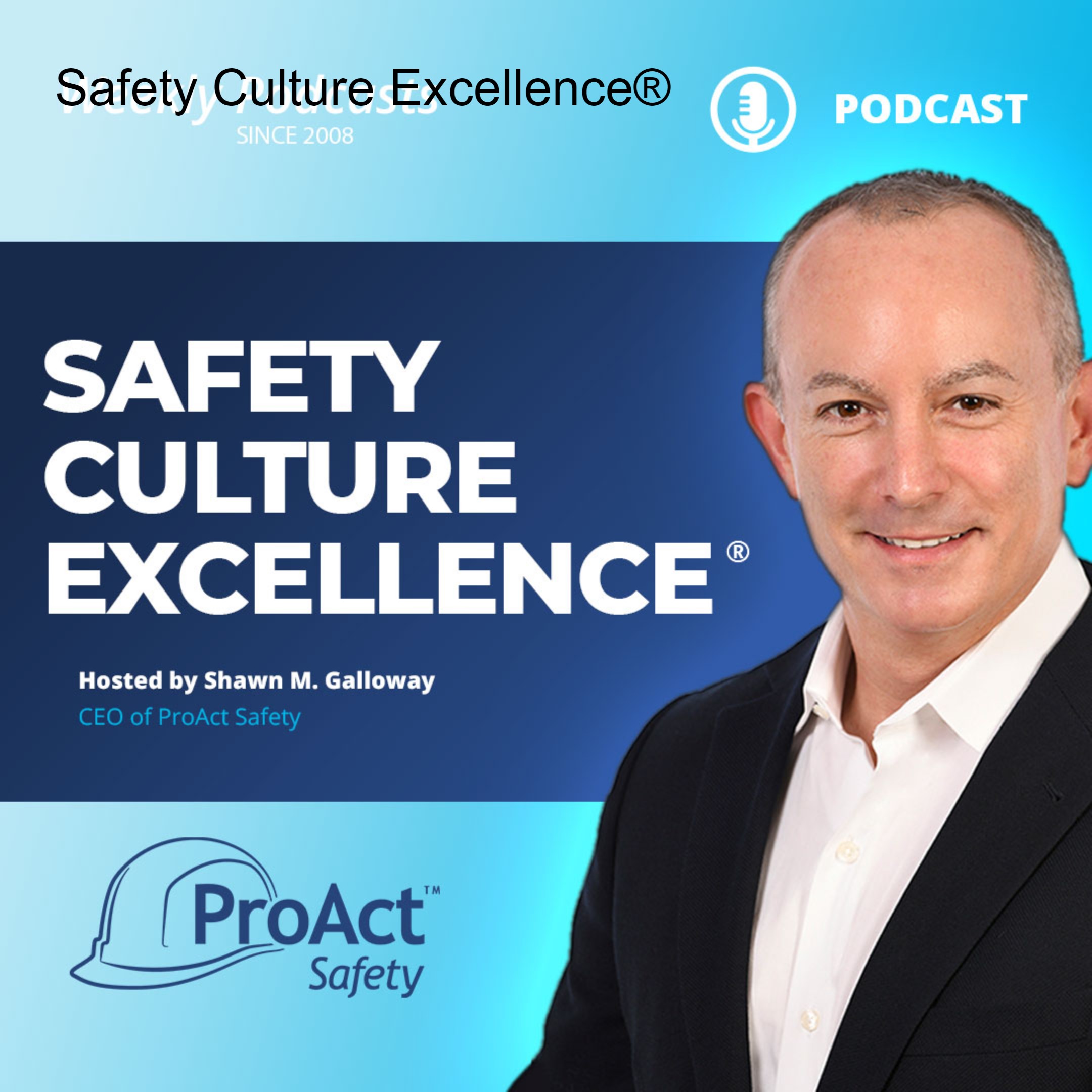Episodes

Monday Feb 22, 2016
428: Behavior-Based Safety Action Plans - Four Types
Monday Feb 22, 2016
Monday Feb 22, 2016


Monday Feb 01, 2016
Monday Feb 01, 2016


Monday Dec 07, 2015
417: 4 Types of Safety Behaviours (Culture Shock Video)
Monday Dec 07, 2015
Monday Dec 07, 2015


Monday May 18, 2015
388 - The Only Way Safety Will Continuously Improve
Monday May 18, 2015
Monday May 18, 2015

Wednesday Apr 01, 2015
Probability: Group Experience
Wednesday Apr 01, 2015
Wednesday Apr 01, 2015
A worker using the wrong tool for a job injures his hand. Another worker has used the same wrong tool numerous times with no injury. One worker retires having used this tool his whole career with no injury and another retiree has had three injuries related to using that tool. Each experience is different, and thus, each perception of the risk is different. Some think the practice is dangerous and some think it is not. Who is right and who is wrong?
We express a range of experience mathematically by calculating probability. With enough data points we can establish a pattern to this risk that may not be obvious to anyone who is a data point, but is accurately describing the experience of the large group. Sharing the findings of a probability study can actually change and norm the perceptions formed by differing experiences within the group. This new perception can more accurately describe the risk and encourage taking precautions against the risk even among those whose experience hasn’t detected the possibility of accidental injury. Perceptions, if not thus managed, will vary by experience. Managing the accuracy of perceptions is a powerful tool for improving safety performance that many organizations have not utilized.
-Terry L. Mathis
For more insights, visit
www.ProActSafety.com
Terry L. Mathis is the founder and CEO of ProAct Safety, an international safety and performance excellence firm. He is known for his dynamic presentations in the fields of behavioral and cultural safety, leadership, and operational performance, and is a regular speaker at ASSE, NSC, and numerous company and industry conferences. EHS Today listed Terry as a Safety Guru in ‘The 50 People Who Most Influenced EHS three consecutive times. He has been a frequent contributor to industry magazines for over 15 years and is the coauthor of STEPS to Safety Culture Excellence (2013, WILEY).


Wednesday Feb 11, 2015
Winning in the Post-Season
Wednesday Feb 11, 2015
Wednesday Feb 11, 2015
Many sports teams who have a good season develop high hopes for a good play-off performance only to be badly disappointed. It seems that play intensifies in the post-season when only the best teams are left and winning is contingent on more than the basics. Safety has some similarities: going from poor performance to better performance comes with the basics and reasonable effort. But when only a few accidents remain per year, preventing them takes a whole new level of effort.
The biggest mistake in both these scenarios is assuming that the strategy that got you to this point will get you the rest of the way to top. The problem is that the tools of “bad-to-good” don’t work on “good-to-excellent.” That game plan and those tools must form the basis of your effort, but winning will take a dose of “above and beyond.” The last remaining risks aren’t always visible to the naked eye and a whole new level of analysis is needed. When you get rid of the obvious risks, the next level is less obvious. When you eliminate the high-probability risks, the remaining ones are lower probability and harder to detect. Excellence is a whole new game overlaid on the old game. When you get to the playoffs, develop a new game plan.
-Terry L. Mathis
For more insights, visit
www.ProActSafety.com
Terry L. Mathis is the founder and CEO of ProAct Safety, an international safety and performance excellence firm. He is known for his dynamic presentations in the fields of behavioral and cultural safety, leadership, and operational performance, and is a regular speaker at ASSE, NSC, and numerous company and industry conferences. EHS Today listed Terry as a Safety Guru in ‘The 50 People Who Most Influenced EHS three consecutive times. He has been a frequent contributor to industry magazines for over 15 years and is the coauthor of STEPS to Safety Culture Excellence (2013, WILEY).


Wednesday Jan 21, 2015
Quantity and Quality
Wednesday Jan 21, 2015
Wednesday Jan 21, 2015
Rule of thumb: Any quantity goal without a quality requirement will encourage “pencil whipping”. This is especially true of safety audits and observations. Organizations that require everyone to do two observations per month or two audits per week are misstating what they truly want. Quantity is ineffective without quality. There are thousands of studies that support the idea that a certain quantity of contact or assessment is necessary for improvements. But they all go out the window if the numbers are filled with fake, or otherwise poor-quality, components.
What drives change is the right number of quality contacts. Going through the motions and getting the numbers just to check off a box is not what organizations really want. So why do they set these goals, omitting the quality requirements? Largely because the quantity is easily and discretely measured while the quality is more complicated and subjective. It is easier to create accountability around numbers than quality, but doing so can completely compromise the effort. State both quantity and quality requirements in all goals and do your best to hold workers accountable for both.
-Terry L. Mathis
For more insights, visit
Terry L. Mathis is the founder and CEO of ProAct Safety, an international safety and performance excellence firm. He is known for his dynamic presentations in the fields of behavioral and cultural safety, leadership, and operational performance, and is a regular speaker at ASSE, NSC, and numerous company and industry conferences. EHS Today listed Terry as a Safety Guru in ‘The 50 People Who Most Influenced EHS three consecutive times. He has been a frequent contributor to industry magazines for over 15 years and is the coauthor of STEPS to Safety Culture Excellence (2013, WILEY).


Monday Aug 04, 2014
348 - A Transformational Pareto Analysis Finding Focus
Monday Aug 04, 2014
Monday Aug 04, 2014
Greetings everyone, this podcast recorded while in Orlando, FL. I’d like to share an article I wrote that was published in the July 2014 edition of Professional Safety Magazine. The published article can either be found on the magazine’s website or under Insights at www.ProActSafety.com.
I hope you enjoy the podcast this week. If you would like to download or play on demand our other podcasts, please visit the ProAct Safety’s podcast website at: http://www.safetycultureexcellence.com. If you would like access to archived podcasts (older than 90 days – dating back to January 2008) please visit www.ProActSafety.com/Store. For more detailed strategies to achieve and sustain excellence in performance and culture, pick up a copy of our book, STEPS to Safety Culture Excellence - http://proactsafety.com/insights/steps-to-safety-culture-excellence
Have a great week!
Shawn M. Galloway
ProAct Safety

Monday Jun 16, 2014
341 - Who Should Perform Behavior-Based Safety Observations?
Monday Jun 16, 2014
Monday Jun 16, 2014
Greetings everyone, this podcast recorded while in Galveston, TX. I’d like to share an article I wrote that was published May 2014 in BIC Magazine. The published article can either be found on the magazine’s website or under Insights at www.ProActSafety.com.
I hope you enjoy the podcast this week. If you would like to download or play on demand our other podcasts, please visit the ProAct Safety’s podcast website at: http://www.safetycultureexcellence.com. If you would like access to archived podcasts (older than 90 days – dating back to January 2008) please visit www.ProActSafety.com/Store. For more detailed strategies to achieve and sustain excellence in performance and culture, pick up a copy of our book, STEPS to Safety Culture Excellence - http://proactsafety.com/insights/steps-to-safety-culture-excellence
Have a great week!
Shawn M. Galloway
ProAct Safety

Monday Jun 02, 2014
339 - Conquer Distracted Driving by Becoming an ACE
Monday Jun 02, 2014
Monday Jun 02, 2014
Greetings everyone, this podcast recorded while in Lake Charles, LA. I’d like to share an article Terry Mathis wrote that was published April 2014 in EHS Today Magazine. The published article can either be found on the magazine’s website or under Insights at www.ProActSafety.com.
I hope you enjoy the podcast this week. If you would like to download or play on demand our other podcasts, please visit the ProAct Safety’s podcast website at: http://www.safetycultureexcellence.com. If you would like access to archived podcasts (older than 90 days – dating back to January 2008) please visit www.ProActSafety.com/Store. For more detailed strategies to achieve and sustain excellence in performance and culture, pick up a copy of our book, STEPS to Safety Culture Excellence - http://proactsafety.com/insights/steps-to-safety-culture-excellence
Have a great week!
Shawn M. Galloway
ProAct Safety

